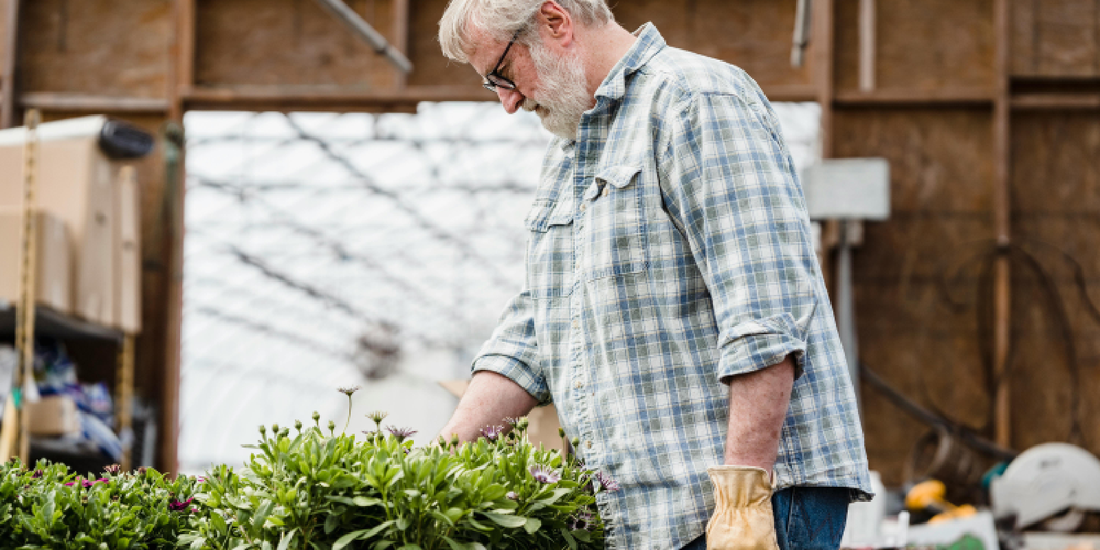
How to Clean and Maintain a Multi-Tier Plant Shelf
Share
When you invest in a multi-tier plant shelf—especially one as functional and stylish as the VerdantGlow S-Shaped 8-Tier Plant Shelf with Grow Lights from amoyls—you’re not just buying furniture. You’re creating a living display that supports the growth, health, and beauty of your indoor plants. To keep this piece performing at its best, proper cleaning and consistent maintenance are essential. Over time, dust, water stains, soil, and even tiny pests can accumulate on the shelves and lighting components. Left unchecked, these issues can shorten the lifespan of the product and compromise plant health.
In this guide, we’ll walk you through step-by-step cleaning methods, preventive care routines, and pro tips for ensuring your multi-tier plant shelf remains as stunning and efficient as the day you set it up. Whether you’re a first-time indoor gardener or an experienced plant enthusiast, these practices will help you maximize both the visual appeal and functionality of your investment.
Why Cleaning and Maintenance Matter
A multi-tier plant shelf is more than just storage; it’s an ecosystem. Each level supports plants that require light, moisture, and airflow. Without proper care:
- Dust accumulation can block grow lights and reduce their efficiency.
- Moisture stains from watering can damage shelves or create mold.
- Soil and fallen leaves can attract pests.
- Neglected fixtures (like screws or joints) may loosen, reducing stability.
Consistent cleaning preserves not only the shelf but also ensures your plants thrive in a healthy environment.
Step 1: Preparing Your Shelf for Cleaning
Before you begin, remove all plants from the shelf. Place them temporarily on a nearby surface that receives adequate light. Grouping them by size or type can make repositioning easier once cleaning is done.
- Turn off grow lights and unplug the unit if it has built-in illumination.
- Check each tier for loose soil, water residue, or plant debris.
- Gather supplies: microfiber cloths, mild soap, a spray bottle, soft brush, water, and natural cleaning agents (like diluted vinegar for mineral stains).
Taking the time to prepare ensures you won’t damage plants or the shelf during cleaning.
Step 2: Dusting and Surface Cleaning
Dust and pollen are unavoidable in any plant display. Regular dusting keeps surfaces spotless and prevents buildup.
- Use a microfiber cloth or soft duster to wipe each shelf tier.
- Pay special attention to corners and edges where dirt collects.
- For stubborn spots, lightly dampen the cloth with water.
- Avoid harsh chemicals, as they can leave residues harmful to plants.
If your VerdantGlow shelf is made with moisture-resistant coating, a damp cloth will be safe. Always dry surfaces afterward to avoid streaks or water damage.
Step 3: Cleaning Grow Lights and Fixtures
One of the standout features of the amoyls VerdantGlow S-Shaped 8-Tier Plant Shelf is its built-in natural-spectrum grow lights. For plants to receive full benefits, lights must remain clear and unobstructed.
- Turn off and unplug the lights before touching them.
- Use a dry microfiber cloth to gently wipe the surface of bulbs or LED covers.
- For stubborn film, a slightly damp cloth can be used—just ensure no water seeps into wiring.
- Check cords for dust or kinks, and ensure they are positioned safely.
Routine cleaning keeps your plants’ light source efficient and extends the lifespan of the LEDs.
Step 4: Handling Water Stains and Mineral Deposits
Watering plants indoors often leads to water spots, mineral buildup, or soil streaks. Left untreated, these stains can discolor your plant shelf.
- For light water stains, wipe with a damp cloth.
- For hard mineral deposits (caused by tap water), mix equal parts water and vinegar in a spray bottle. Lightly mist the stain, wait a few minutes, then wipe clean.
- Always dry surfaces thoroughly. Moisture left on the shelf can encourage mold or weaken materials over time.
Using filtered or distilled water for your plants can also reduce future buildup.
Step 5: Caring for the Frame and Structure
Your shelf’s frame is the backbone of the entire display. Over time, screws and joints may loosen, especially with frequent watering or if you move the shelf often.
- Check stability monthly by gently shaking the shelf. If it wobbles, tighten screws.
- Inspect for rust or corrosion if the frame includes metal. A light application of anti-rust spray can prevent long-term damage.
- If the shelf includes wooden components, polish occasionally with plant-safe wood oil to maintain finish and durability.
This preventive care ensures your shelf remains strong enough to hold multiple tiers of plants safely.
Step 6: Pest and Mold Prevention
Indoor gardens are vulnerable to pests like fungus gnats, spider mites, and aphids. Additionally, the damp environment may encourage mold on shelves if not cleaned properly.
- Remove fallen leaves and spilled soil weekly.
- Wipe down trays and lower tiers where water may collect.
- Use natural pest deterrents like neem oil sprays around plants, but avoid applying directly on the shelf surface.
- If mold appears, scrub the area with a diluted vinegar solution, then dry completely.
Consistent prevention is easier than fighting a large infestation later.
Step 7: Seasonal Deep Cleaning
In addition to routine weekly or monthly upkeep, perform a deep cleaning every 3–4 months:
- Remove all plants and pots.
- Take apart removable sections of the shelf, if possible.
- Wash trays or tiers with warm soapy water.
- Rinse and dry thoroughly before reassembly.
- Sanitize grow light surfaces with a gentle wipe.
- Recheck screws, frames, and overall stability.
Think of this like a “spring cleaning” for your indoor garden setup—it resets your shelf and creates a fresh environment for growth.
Pro Tips for Long-Term Shelf Maintenance
- Use plant saucers or trays under pots to catch excess water and prevent spills.
- Rotate plants occasionally to prevent uneven wear or water exposure on certain tiers.
- Keep airflow in mind: good ventilation reduces moisture buildup, mold risk, and dust.
- Label watering schedules: avoiding overwatering minimizes mess and keeps shelves clean longer.
These small habits extend the lifespan of your shelf while also making your plant care routine easier.
Choosing the Right Cleaning Products
Not all cleaning solutions are plant-safe. Avoid bleach or strong chemicals that could leave harmful residues. Instead:
- Use mild dish soap diluted in water.
- For sanitizing, rely on vinegar or lemon juice solutions.
- Keep a dedicated cloth or sponge specifically for your plant shelf, so it doesn’t get exposed to kitchen or bathroom cleaning agents.
By sticking to gentle solutions, you ensure your plants remain safe from toxic exposure.
Troubleshooting Common Issues
Even with proper maintenance, you may encounter some problems:
- Persistent mold spots → Increase ventilation, reduce watering frequency, and wipe shelves more often.
- Light flickering → Check power connections or replace bulbs if needed.
- Shelves sagging → Avoid overloading tiers; redistribute plant weight evenly.
- Rust patches → Lightly sand, then apply rust-resistant coating.
Addressing these issues early prevents them from escalating into bigger problems.
The amoyls Advantage
The VerdantGlow S-Shaped 8-Tier Plant Shelf with Grow Lights is designed with durability and ease of maintenance in mind. Its sleek shape minimizes dust collection, the natural-spectrum grow lights are long-lasting, and the eight tiers provide structured space for a wide variety of plants. By following the cleaning and maintenance steps above, you’ll enjoy a shelf that looks brand new and provides reliable support for your greenery year after year.
Final Thoughts
Maintaining your multi-tier plant shelf is a balance of regular upkeep and occasional deep cleaning. With consistent care, the VerdantGlow shelf from amoyls becomes more than just a piece of furniture—it becomes a reliable partner in your indoor gardening journey.
A clean, well-maintained shelf not only extends the product’s lifespan but also ensures your plants flourish in a healthy, visually appealing environment. By dedicating just a little time each week, you safeguard your investment and elevate your living space.
